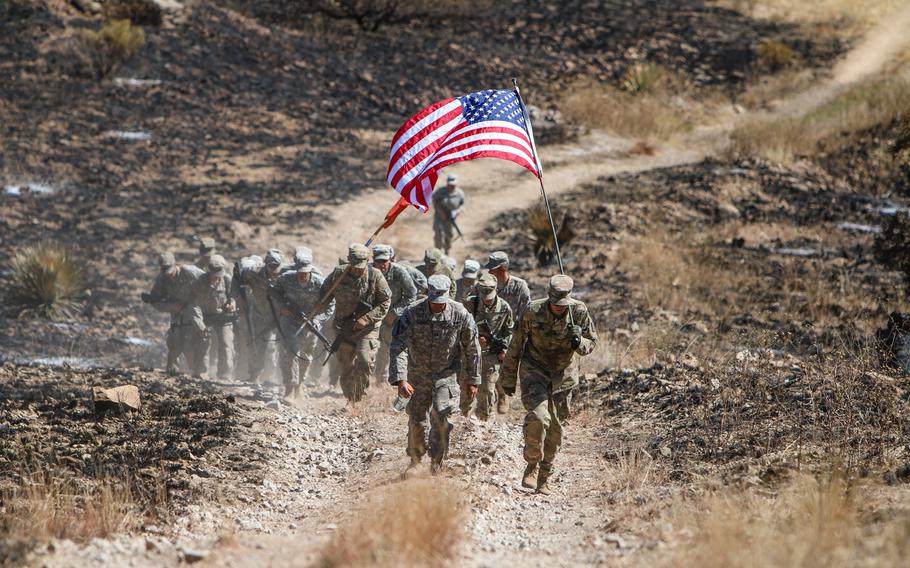
Alpha Company, 40th Expeditionary Signal Battalion conducts a live fire exercise on Range 1B at Fort Huachuca, Arizona. (Lara Poirrier/U.S. Army photo)
WASHINGTON — A panel of Army leaders testified Wednesday before a Senate committee that a massive undertaking to modernize the largest military service is on track, but funding will be critical to its success.
The effort will also require a major cultural shift in helping prepare the Army for a potential great power struggle ahead, the leaders said.
But the shift could take time, as the Army's last broad-based modernization occurred in the 1980s, the leaders testified before a Senate Armed Services Committee subpanel.
"I think we made a great start," Lt. Gen. John M. Murray, the Army's deputy chief of staff, said on the progress so far. "The Army is a big organization and as the saying goes, ‘It takes a long time to turn a big ship.’"
Testimony such as Wednesday’s about future battlefields facing the Army and the other services could influence the development of the next National Defense Authorization Act. But whether the funding needed is approved remains to be seen.
The most recent $700 billion NDAA policy plan to help increase the size of the armed forces was signed into law last month, but it has yet to get the funding necessary to surpass budget caps. On Wednesday, Senate leaders said they had reached a two-year bipartisan funding deal that could be good news for new military efforts such as the Army modernization plan, but it was unclear if the proposal had sufficient support in the House.
In their submitted testimony to the Armed Services Committee, Army leaders told the Senate panel that a combination of strategic, technological, institutional and budgetary trends have placed the Army's competitive edge over its adversaries at risk.
"The Army has reached an inflection point," Murray said. "We can no longer afford to choose between near-term readiness and modernization.”
The efforts come amid growing concerns that the United States could face a global power struggle against Russia and China. The countries were named recently in the National Defense Strategy as the greatest threats facing the United States aside from its ongoing war on terrorism.
Sen. Tom Cotton, R-Ark., chairman of the Senate Armed Services Committee subpanel on airland, said while terrorism and the development of Iran's and North Korea's nuclear programs remain a concern, Russia and China are the new focus.
"We are in an era of renewed great power competition, which means Russia and China are the greatest threats we face today,” Cotton said. "China and Russia are building weapon systems to rival our own capabilities and in some cases we are already falling behind those countries and it would be much worse were they to ally against us.”
The Army's modernization plan has six areas of focus, which includes restoring the Army's long-range precision fire capabilities, next generation combat vehicles and improving communication networks. Also, the Army will focus on new aircraft designs, restoring air and missile defense systems and enhancing soldier lethality.
The Army is also developing a new futures and modernization command. The command should see initial operational capabilities by June or July, and be fully operational about a year later, Murray said.
"We're talking about a deep cultural change in the way a system has been operating for years," said Sen. Angus King, I-Maine. "Cultures are the hardest thing to change.”
Murray agreed, but said there is a sense of urgency to make that change.
"It will happen," he said.
grisales.claudia@stripes.com Twitter: @cgrisales